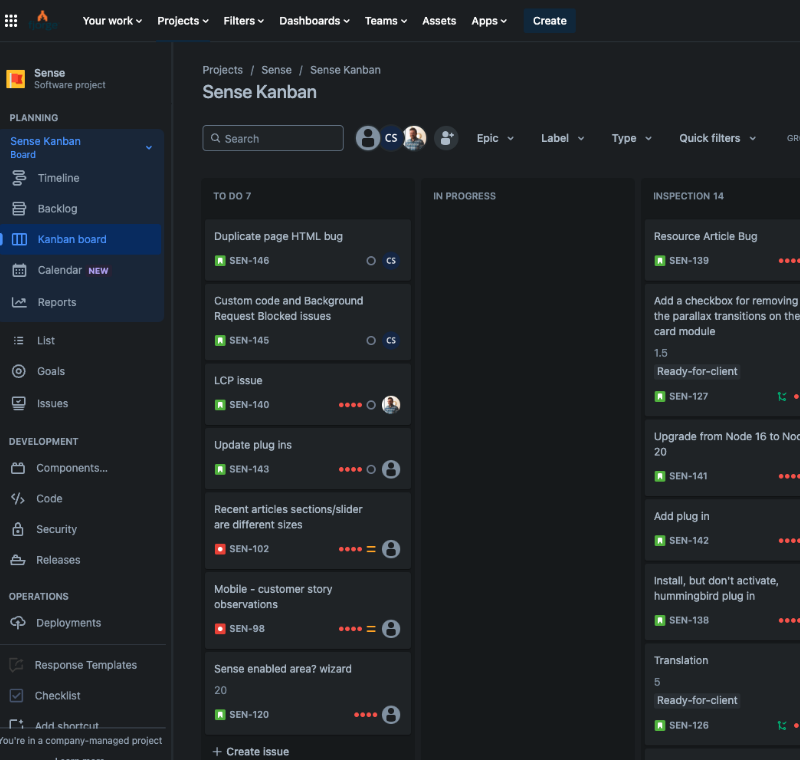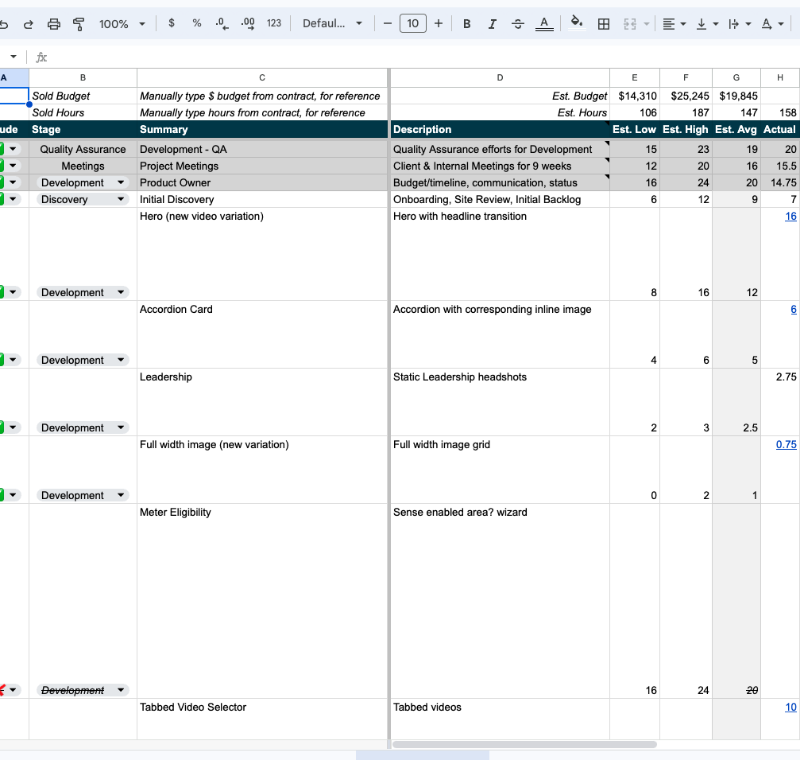
Usability Testing 101
What is Usability Testing?
Usability testing is a fundamental and invaluable practice within fjorge's UX department, designed to gauge the effectiveness and user-friendliness of digital products, websites, or applications. It is an approach that focuses on understanding how real users interact with a product, identifying potential pain points, and gathering insights to optimize the user experience.
Understanding Usability Testing
Usability testing is conducted to answer essential questions about a digital product's usability, such as:
- How easily can users accomplish specific tasks with the product?
- Do users encounter any obstacles or confusion during their interactions?
- What are the users' overall impressions and satisfaction with the product?
The Process of Usability Testing
The usability testing process involves several key steps:
- Defining Objectives: We collaborate closely with stakeholders to establish clear objectives and define the key performance indicators that will guide the testing process.
- Creating Test Scenarios and Tasks: Based on the project's goals and target audience, we design test scenarios and tasks that simulate real-life user interactions with the product.
- Participant Recruitment: We select participants who represent the target user demographic to ensure that the insights gained are relevant and applicable.
- Conducting the Tests: During the testing sessions, we observe participants as they complete the assigned tasks and take note of their interactions, challenges, and feedback.
- Analyzing and Interpreting Results: The data collected from the usability tests are thoroughly analyzed and interpreted to identify usability issues, trends, and opportunities for improvement.
- Iterative Refinement: Usability testing is an iterative process, and the insights gained inform design adjustments and refinements to enhance the product's user experience.
Why Usability Testing Matters
Usability testing is a crucial step in the product development lifecycle as it provides several key benefits, including:
- Identifying and addressing usability issues early, reducing rework and development costs.
- Enhancing user satisfaction, resulting in increased user retention and positive brand perception.
- Validating design decisions with data-driven insights, leading to a more user-centric and successful product.
How Usability Testing Can Save Budget
Usability testing is not only a powerful tool for improving the user experience but also a strategic approach that can reduce budget throughout the development lifecycle. At fjorge, we recognize the economic benefits of usability testing and have integrated it into our UX department's core practices to optimize project budgets. Here's how usability testing can save your budget:
Preventing Costly Rework and Redesign
Usability testing is typically conducted in the early stages of design or development when changes are more cost-effective to implement. By identifying and addressing usability issues early on, we prevent the need for major rework or redesign later in the development process. Catching and resolving potential problems upfront minimizes the time and resources required to fix critical design flaws, resulting in significant budget savings.
Streamlining Development and Agile Iterations
Usability testing empowers us to gather user feedback quickly and efficiently. This feedback fuels an agile development approach, allowing for iterative design improvements based on real user data. Rapid iterations enable us to make timely adjustments, aligning the product with user expectations and reducing the risk of costly development delays from project timelines.
Optimizing Resource Allocation
By understanding user behavior and preferences through usability testing, we can focus development efforts on features and functionalities that align with user needs. This optimization ensures that resources are allocated to high-priority elements, avoiding unnecessary expenditures on features that may not be valuable to users.
Enhancing Product Marketability and ROI
Investing in usability testing enhances the marketability of your product. A well-designed and user-friendly product gains a competitive edge, attracting more users and generating higher customer satisfaction. Positive user experiences lead to increased brand loyalty, word-of-mouth referrals, and ultimately, a higher return on investment.
How to Recruit Users
Identifying Target User Profiles and Personas
Recruiting the right users is essential to gather accurate insights. We start by creating detailed personas that represent various segments of your target audience. These personas guide our participant selection process.
Utilizing Remote Usability Testing Software
At fjorge, we implement remote usability testing software as a core practice for our projects. By utilizing remote testing, we optimize the processes and deliver cost-effective solutions without compromising on the quality of insights gained. Our strategic use of remote usability testing software allows us to offer a comprehensive and budget-friendly approach to refining your digital products.
We carefully design test scenarios and tasks tailored to the project's objectives and the target audience. Participants are then invited to take part in the testing process remotely, using their own devices and from the comfort of their preferred locations.
Iterating Off of Insights
At fjorge, our commitment to delivering exceptional user experiences goes beyond identifying usability issues – it extends to harnessing the power of insights gained from usability testing to drive iterative design improvements. This iterative approach ensures that your digital product evolves in response to real user feedback and aligns perfectly with user expectations.
Analyzing Usability Testing Data
Following each round of usability testing, our team engages in data analysis. We examine participants' interactions, behaviors, challenges, and feedback to uncover patterns and identify usability pain points. This data-driven analysis is the foundation upon which our iterative design process is built.
Prioritizing feedback
Usability testing data provides us with a clear understanding of where improvements are most needed. We prioritize our findings based on the severity and impact of usability issues, ensuring that the most critical issues are addressed first. This targeted approach enables us to make the most of our resources while delivering significant user experience enhancements.
Collaborative Implementation with Development Team
Our experienced UX designers work collaboratively with the development team to implement the necessary design adjustments. This collaborative approach ensures that design changes are seamlessly integrated into the development process.
Continuous Enhancement
Iterative design does not stop with the initial release. Even after a product launch, we can continue to gather user feedback and make ongoing refinements based on real-world usage. This continuous enhancement ensures that the product maintains its relevance, usability, and competitive edge in the long run.
Have questions about implementing usability testing into your product? Feel free to reach out to our MS Support team for guidance on how to seamlessly integrate this invaluable practice into your development strategy.
Our Team

We are fjorge
Getting to know T&M
...Coming Soon...
Tools We Use
We work with you, to make it work for you. We have our ways but we’re not set in them.
The Iron Triangle
3 Truths of Software Development
The Scope defines all the work required to complete a project. It outlines the specific tasks, deliverables and goals that need to be achieved. Scope sets the boundaries for what the project will and will not include and is critical in managing client and stakeholder expectations.
Why it's important
Properly defining scope ensures that everyone is aligned on what the project entails, avoiding scope creep (uncontrolled changes or continuous growth in project scope).
The budget refers to the total amount of money allocated for completing the project. This includes costs for resources, materials, labor, tools, and any other project expenses. A well-planned budget ensures that the project can be completed within financial constraints.
Why it's important
Managing the budget ensures that the project doesn't run out of funds before it’s completed and helps in making financial decisions throughout the project.
The timeline refers to the schedule or timeframe in which the project tasks and milestones will be completed. It includes deadlines, key milestones, and the final delivery date.
Why it's important
A clear timeline helps manage expectations, keeps the team on track, and ensures timely project delivery.
Your Journey
We'll work with you in all phases of your project
Kick Off & Roadmap
Planning & Execution .... coming soon
Design
... coming soon ...
Development
Achieving project milestones is a key aspect of our process at fjorge. These milestones represent significant progress points where we review, refine, and confirm that the project is on track. By breaking down the project into manageable phases, we ensure that each stage is completed to the highest standard, paving the way for a successful final delivery.
Milestone Meetings
Milestone meetings are pivotal moments in our project timeline. These meetings allow us to review completed work, gather feedback, and make necessary adjustments before moving on to the next phase. By conducting thorough milestone meetings, we ensure that each aspect of your project meets your expectations and aligns with your overall goals.
HyperCare Entry Meeting
What is it? ...coming soon...
Launch Planning
Launch planning is meticulous and collaborative, and begins long in advance of the go live date. We cover quality assurance checks, deployment strategies, DNS changeover and load testing all in advance to ensure a seamless transition to live.
Your Role
Here are some things you can do to make the project seamless.
... coming soon ...
Client Satisfaction
Tips and tutorials to using some of the tools that make projects run smoothly
How do you engage?
5 tips for best Bugherd outcomes:
- Be specific in your feedback.
- Use screenshots and annotations to highlight issues.
- Prioritize bugs based on their impact.
- Engage regularly to keep the process moving.
- Collaborate closely with our team to ensure swift resolution.
These practices will ensure that Bugherd is a powerful ally in maintaining the quality and functionality of your project.
How do you engage?
Content to come...
Basecamp is our go-to project management tool. From organizing tasks to facilitating communication, Basecamp helps us keep everything on track. Melanie will walk you through setting up your account, navigating the platform, and using it to collaborate effectively with our team. By mastering Basecamp, you’ll be fully equipped to engage with the project and ensure its success.




